Squat Rack in Apartment: The Best Way to Set It Up
Author:
Unlock your full potential by engaging with our experts and community! Have questions about your fitness journey or looking for expert advice on weightlifting techniques? Don’t hesitate — leave a comment below and Ihor Shymechko will provide a personalized answer and insights to help you reach your goals.
Torokhtiy is reader-supported. Some links are affiliate links, and we may earn a commission at no extra cost to you. See our disclosure page for details.
So what if you live in an apartment? Can you have a squat rack in apartment? How should you do it? Or is the dream of a home gym dead? Let’s find out.
Here’s the short answer:
Having a squat rack in apartment is perfectly possible. You would need to take permission from your landlord and ensure there’s no risk of damage to the floor beforehand, though.
Now for the long answer. Let’s dive in!
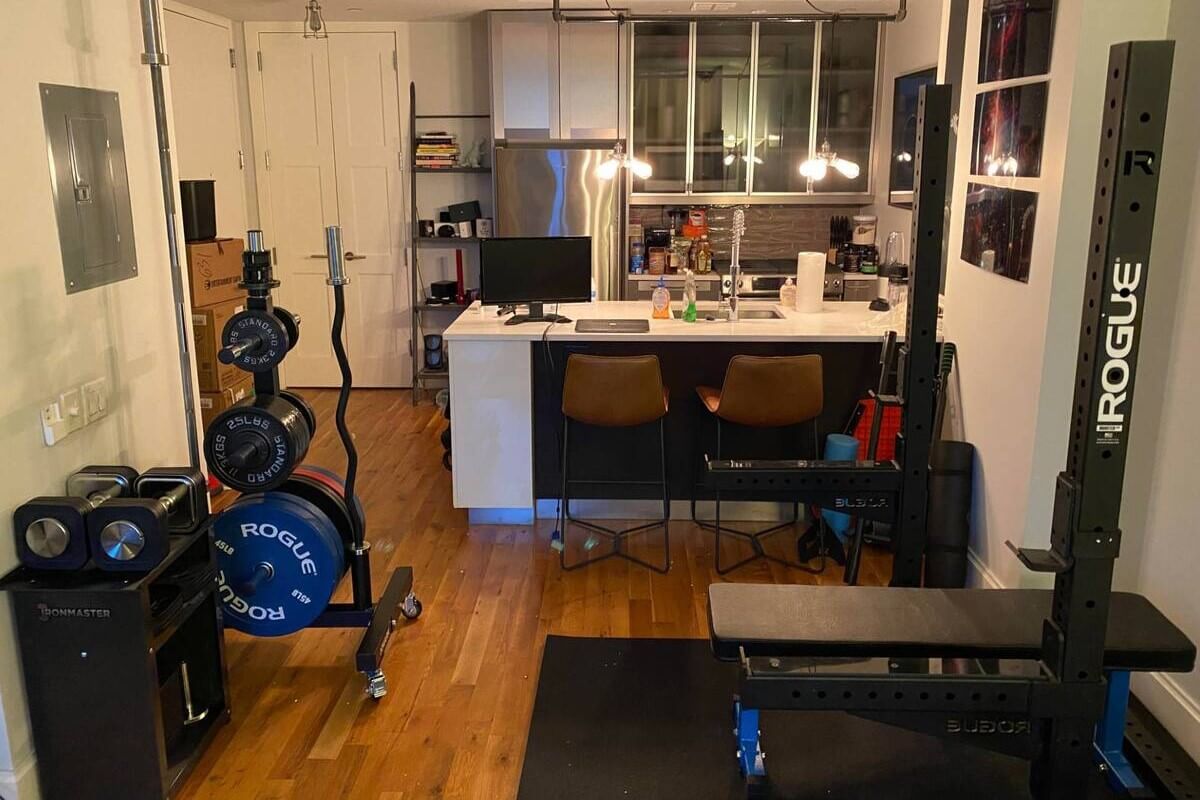
Can You Put A Squat Rack In Apartment?
Putting a squat rack in apartment is no small decision. The lack of space and privacy afforded by a house make it a tad tricky. There are several considerations to be made, but let’s cover the main ones.
The Floor
The first question to answer is whether your floor can handle the weight. There are two parts to this:
1. The Weight On The Rack
When all your barbells are on the rack, it distributes the total weight across a larger area. This helps reduce the impact of the weight on your floor. Totally safe.
The opposite happens when you’re lifting, though. All the weight is concentrated on the spot where you stand. This is where you need to be careful, especially if you’re a heavy lifter. Anything beyond 300lbs is dangerous.
2. How Old Is The Building?
Most new buildings follow a strict structural code that allows them to accommodate moderate weights. If you live in an older building with a floor that’s already falling apart, however, it’s best to consider just going to the gym.
Your Neighbors
Neighbors are another big thing to think about. It’s best to talk your intentions over with your neighbors to avoid any future problems. The major thing your neighbor won’t like is the noise and vibration. There’s nothing to be done about your grunts while lifting, but you can minimize noise by:
- Padding your walls and floors
- Getting stable equipment that reduce vibration
- Not dropping weights
- Being gentle with your equipment
Inform them you’ll be working out, then reassure them it’s safe and that you’ll take precautions to keep the noise down. You can also arrange your workout times to reduce the inconvenience as much as possible.
Be a good neighbor. Building muscles is important, but so is building relationships.
The Apartment
Are your walls thin? Do you have enough space? Does your rack need securing? These are all questions to ask yourself when getting a squat rack for apartment.
Thin walls make it harder to contain the noise. You would have to take extra steps to handle that. The space you have will determine what kind of rack you’ll go for. Having a power rack in apartment that doesn’t need securing will reduce the vibration and spread the load around a lot more than a squat stand.
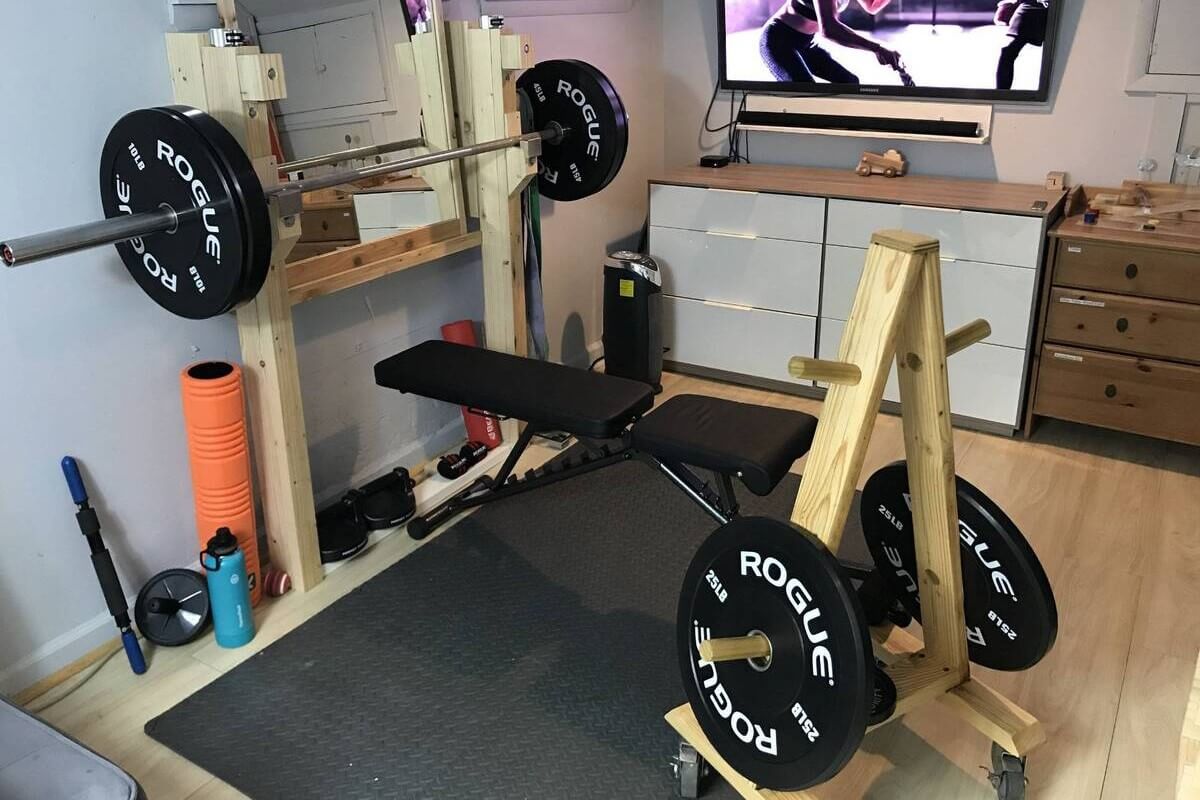
How Can You Protect Your Floor?
There are three major types of stress on your floor:
- Total Weight
- Most rooms are designed to carry about 40lbs per square foot. For a room of 70 square feet, that gives 2,800lbs to play around with.
Your squat rack distributes the weight it carries around the room, so it’s perfectly safe. The problem is how much you lift. A 150lb man lifting 250lb weights is way too much stress on a single spot.
- Most rooms are designed to carry about 40lbs per square foot. For a room of 70 square feet, that gives 2,800lbs to play around with.
- Vibration
- Working on a rack can cause some heavy vibrations, especially if your rack isn’t very stable. This could weaken your floor over time, but it’s not such a big deal.
- Shock Impact
- This one is a big deal. Dropping weights is even more dangerous than lifting heavy weights in one spot. The shock impact of all that weight will send ripples through your floor that could be damaging.
Piling on weight is one thing, putting a punch behind it is something else.
- This one is a big deal. Dropping weights is even more dangerous than lifting heavy weights in one spot. The shock impact of all that weight will send ripples through your floor that could be damaging.
The best way to handle these is to pad your floor. Plywood is one way to protect your floor. It’ll be a protective layer over your floor and help distribute the load around as you lift.
Floor pads we recommend
Rogue Crash Cushions are the perfect way to pad your floor. They absorb the shock impact to protect your floor, and drastically reduce the racket so you don’t get any angry neighbors banging on your door. You can use them for heavy lifting, and they allow other drills such as box jumps.
Gym matting is also a great way to pad your floor. It can absorb the punch of dropped weights, distribute the load when you lift, and reduce the noise too. If gym matting is too expensive for you, however, any other thick mat can serve.
If you do deadlifts in apartment, you have to own a deadlift platform. It cushions the shock, distributes the load, and reduces the noise much better than a mat will.
Securing your rack is another good option. An unstable rack can be frustrating to workout on, but it’s even worse for your floor. You can secure your rack by bolting it down or using a rack stringer.
One more thing. Don’t drop your weights. Gym matting and deadlift platforms can help absorb the shock from occasionally dropped weights, but don’t make it a habit. It’s bad for your floor, and your neighbors will hate it too.
How Heavy Can You Lift in Your Apartment?
You have nothing to worry about if you live on the ground floor. From the second floor upwards, it’s not as straightforward. Bedrooms in the US can carry a minimum of 30lbs per square foot, and other rooms can take at least 40lbs per square foot. So a 100 square foot room can take 4,000bs (3,000 for a bedroom).
You can knock yourself out as long as you keep the weight distributed. Plywood, rubber mats, and a deadlift platform can help with that. You can put in a standard power rack with its accessories and still end up way below the bearing capacity of your floor. Let’s try it!
- 3/4” plywood weighs 55 lb. Use three pieces to pad the floor, and you’ve got 165 lbs.
- Rubber/gym matting for extra floor padding and noise reduction add 120 lbs.
- A standard power rack is about 550 lbs.
- Trap bar, tradition, and EZ bar barbells add about 170 lbs.
- Add up another 450 lbs with weight plates.
- Adjustable barbells pile on an extra 180 lbs.
- Let’s throw in a standard treadmill at 350 lbs because why not?
All that equipment adds up to 2,000 lbs. You are well below the maximum load of 4.000lbs (3,000 for bedrooms).
This calculation excludes weight dropping, of course. It also assumes there’s nothing else in the room. If you’re putting your squat rack in bedroom or living room with other furniture, that changes things.
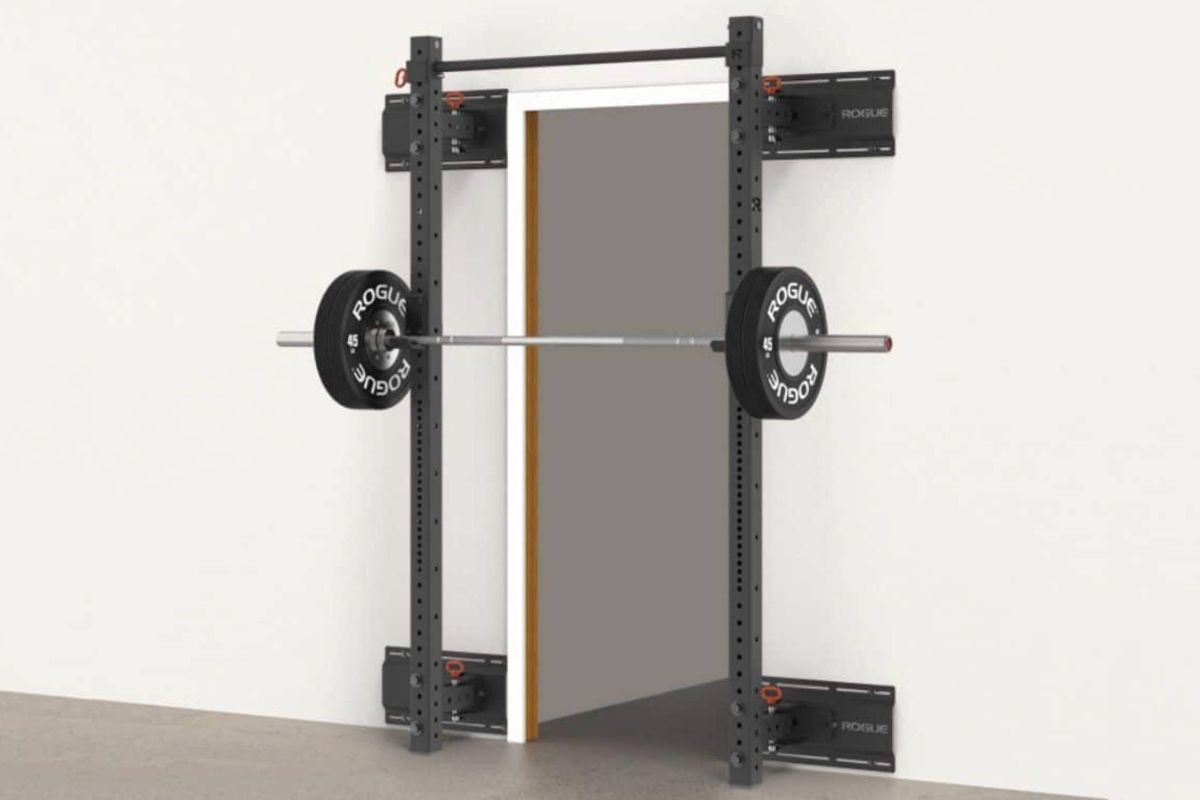
Can You Drop Weights in Your Apartment?
Dropping weights when deadlifting is pretty popular among lifters, especially for very heavy sets. It’s frowned upon in some gyms, even banned in some, but still popular. Working out in an apartment is quite different from going to the gym. There are two main concerns about dropping weights in an apartment:
1. The shock impact
Lifting 300lbs of weight is something your floor can easily take with the right padding. Dropping 300lbs from head length is an entirely different matter. The shock impact will exert a load much more than 300lbs, and that’s not healthy for your floor.
If you must drop weights in your apartment, get an Olympic lifting pad or platform. It’s made from wood and rubber, and is used to absorb the shock of dropped weights of up to 400lbs. The lifting pad is most commonly used in Olympic style lifting or fitness lifting.
A deadlift platform is about 8″ wide and 4″ deep, but an Olympic lifting pad is at least 8″ deep. It’s also padded all around with thick rubber to absorb whatever you throw at it, literally.
2. Your neighbors
Neighbors are the second problem with dropping weights in an apartment. Padding helps, but there’s no taking away the noise that comes with dropping weights. Whoever lives below you will have nothing pleasant to say about the racket.
There are some other ways to reduce noise but none will completely take it away. Coming to an understanding with your neighbor is the best way to handle it.
We don’t advise you to drop weights in your apartment, but some weights are too heavy to be dropped gently and reducing your weight might have other unwanted consequences. So if you must, get a lifting pad, keep the noise down as much as you can, and settle with your neighbor.
Squat Racks We Recommend for Apartment
It’s not just about getting a squat rack in apartment, it’s about getting the right one. Here are some top quality squat racks for apartment.
1. SML-1 Rogue 70 Monster Lite Squat Stand
The Rogue 70” Monster Lite Squat Stand is great for low ceiling apartments. It stands 6 feet tall with a 48 by 49 inch footprint that spreads your weight around nicely. It won’t take as much weight as a full power rack, but it’ll serve your basic weight needs up to 1,000lbs.
This squat stand is great for your apartment because it’s completely safe for your floor. You don’t need to bolt it to your floor. In fact you can disassemble and reassemble easily if you want to. Put in some mat flooring around and it won’t make too much of a racket too. Looks totally badass too.
So if you’re looking for a rack to put in your apartment, you can go rogue.
2. Titan T-3 Series Short Squat Stand
The Titan T-3 Short Squat Stand is just what you need if you need to move your rack around your apartment. It’s short enough so you don’t need to worry about height when moving it around, and there’s zero need for bolting.
The Titan can take as much as 1,000lbs and its 48 by 47 inch area will spread all that weight around safely. That gives you the freedom to workout in total safety and comfort. One review called it an absolute beast.
There’s no workout companion better than a titan. Check it out here.
Questions You May Have
Can I Have A Squat Rack On Second Floor?
Yes, you can put a squat rack on second floor. If it’s all your house, you only need to worry about the floor. Plywood, gym or other rubber matting, and a deadlift platform will all help make things easier for your floor.
You have to consider your neighbors if you live in an apartment, especially if there’s someone living under you.
How Much Weight Can A Concrete Apartment Floor Hold?
Most rooms can hold 40lbs per square foot (30lbs for bedrooms). That means a room of 100 square feet can take about 4,000lbs. It drops to 3,000lbs for bedrooms so it’s safer to have your squat rack in living room than in your bedroom.
Be careful to avoid piling all the weight in one place. Spread it out as much as you can, and never place your rack at the center of the room because that’s where it’s weakest.
How Do I Do Deadlifts In Apartment?
You’ll need a deadlift platform to help distribute the weight and absorb the shock of occasional weight drops.
An Olympic lifting pad gives you much more support to allow for dropping weights if you must.
Can I Have A Power Rack In Apartment?
You can put a full power rack in apartment if you have enough space to take it. You’ll also have to take the rack weight into account, of course.
Thick rubber matting is the best flooring for the power rack, and a lifting pad will help you secure your rack so you don’t have to bolt it into the floor.
In Conclusion
Setting up a home gym in an apartment is trickier than in a house, but it can be done.
Make sure your floor can take whatever weight you’ll be packing. Plywood, rubber mats, and lifting platforms will all help with that. Then take all the measures you can to keep the noise to a minimum. A good understanding with your neighbors and landlord won’t hurt at all.
Now it’s your turn. Will you put a rack in your apartment? What kind of weights will you be lifting? How about the neighbors? Did we miss anything in this article? Talk to us in the comments, we’d love to hear from you.
Cheers, and see you in the comments!
Also read:
References:
- What Is A Squat Rack Stringer? // Home Gym Hideaway:
https://homegymhideaway.com/squat-rack-stringer/ - 21 HIGHLY EFFECTIVE WAYS TO QUIET YOUR HOME GYM // Gym Crafter: https://gymcrafter.com/sound-proof-home-gym/
Why Trust Us?
With over 20 years in Olympic weightlifting, strength training, nutrition coaching, and general fitness our team does its best to provide the audience with ultimate support and meet the needs and requirements of advanced athletes and professional lifters, as well as people who strive to open new opportunities and develop their physical capabilities with us.
By trusting the recommendations of our certified experts in coaching, nutrition, and sports training programming, as well as scientific consultants, and physiotherapists, we provide you with thorough, well-considered, and scientifically proven content. All the information given in the articles concerning workout programming, separate exercises, and athletic performance, in general, is based on verified data.
The product testing process is described in more detail here.
Author: Ihor Shymechko
Pro Olympic Weightlifter, Coach
Best Results: Snatch – 208 kg,
C&J – 240 kg
Ihor has been a professional weightlifter since 1996, boasting over two decades of competition experience. His notable achievements include clinching the European Championship in 2009 and securing a silver medal in the 105kg division at the Senior World Championships in 2011. Ihor represented his country in the 2008, 2012, and 2016 Summer Olympics. After retiring from competitive weightlifting, he transitioned to coaching, leveraging his vast experience to guide athletes who now compete on both national and international stages.



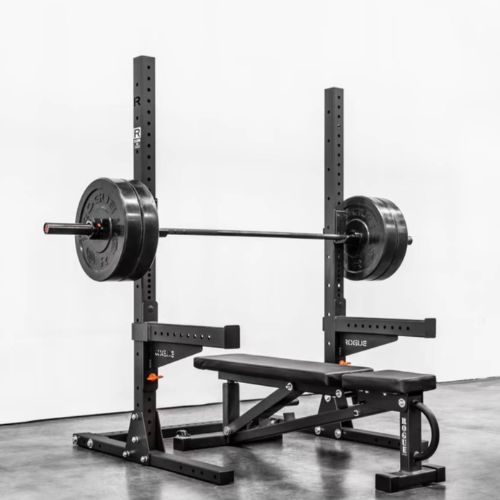
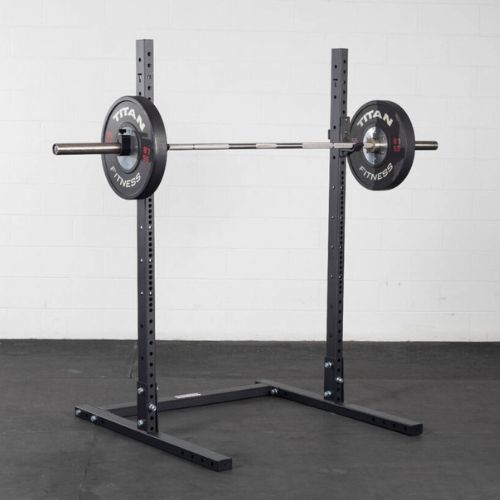
Still have questions after reading our article? Unlock your full potential by engaging with our experts and community! Don’t hesitate — leave a comment below and Ihor Shymechko will provide a personalized answer and insights to help you reach your goals.